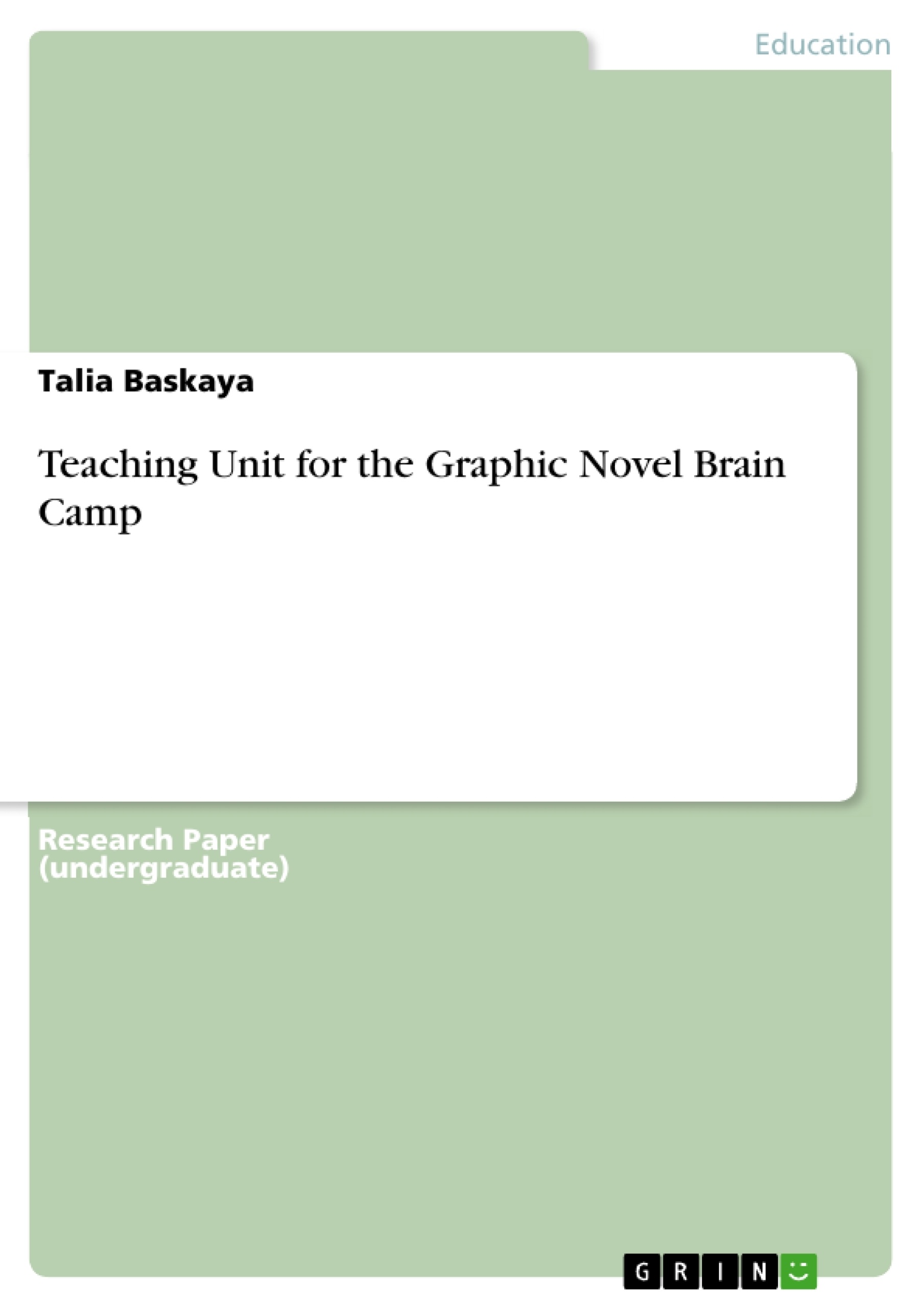Living in a time in which working with technology has become usual in all kinds of situations and especially in educational terms, people still tend to underestimate the benefits of using several kinds of media which are actually obvious. Parents and politicians tend to focus on the usage of technology and emphasize its pros and importance for teaching. On the one hand, they demand for the newest media and technologies, but on the other hands they seem to refuse innovations such as using youth literature, especially graphic novels. While reading the classics keeps being a big part of the curriculum, the educational standards themself have changed. Especially while teaching English in a foreign language classroom it is now demanded to concentrate on fostering competences than making the students memorize several information. But the curriculum and the methods of teaching remain instead of innovating them. One innovation which still is not considered may be teaching English by using Graphic Novels. Firstly, it is important to define the term “graphic novel” correctly and to know about its traces and development. According to Hallet, graphic novels are fictional and similar to long novels, but uses the narrative form of comics. Graphic novels mainly arisen from the comic books from the US. Secondly, it is necessary to be aware of their benefits and how to use them while teaching English.
Although graphic novels seem to remain as media which are not considered while teaching English in a foreign language classroom, an increasing number of educators try to integrate them in the curriculum and stand against the criticism. The following term paper will discuss the usage of graphic novels in the foreign language classroom, will relate to the educational policies and compare the advantages and disadvantages. Furthermore, a graphic novel will be analyzed and a teaching unit using it will be presented.
Inhaltsverzeichnis (Table of Contents)
- Introduction
- Theoretical Introduction
- Graphic Novels in the Foreign Language Classroom
- Educational policies:
- Advantages and disadvantages of the Usage of Graphic Novels
- Teaching Unit
- Brain Camp: Technical analysis
- Sequence
- Works cited
Zielsetzung und Themenschwerpunkte (Objectives and Key Themes)
This term paper explores the use of graphic novels in the foreign language classroom, particularly focusing on their potential and challenges for teaching English as a foreign language (EFL). It aims to address the need for innovation in EFL pedagogy by advocating for the inclusion of graphic novels as a valuable textual resource.
- The potential benefits of graphic novels for EFL learners
- The role of educational policies in shaping the use of graphic novels in classrooms
- The advantages and disadvantages of using graphic novels in EFL settings
- A practical analysis of a specific graphic novel, "Brain Camp"
- The development of a teaching unit utilizing "Brain Camp" for EFL instruction
Zusammenfassung der Kapitel (Chapter Summaries)
- Introduction: This chapter sets the context for the paper by highlighting the growing importance of incorporating diverse media, such as graphic novels, into EFL classrooms, particularly in an era of technological advancements. It argues for the need to move beyond traditional approaches and embrace innovative teaching methodologies, such as the use of graphic novels, to foster language learning and communication skills.
- Theoretical Introduction: This section delves into the theoretical underpinnings of using graphic novels in EFL instruction. It examines the common practice of focusing on traditional literary works and emphasizes the need to consider the impact of graphic novels on language learners. The chapter highlights the criticisms surrounding the use of new media in EFL classrooms, such as concerns about colloquial language and potential neglect of traditional linguistic elements.
- Graphic Novels in the Foreign Language Classroom: This chapter specifically addresses the use of graphic novels in EFL settings. It explores the criticisms often directed towards their integration and argues that graphic novels can be a valuable tool for fostering communication skills and broadening textual exposure.
- Educational Policies: This chapter examines the evolving educational policies surrounding EFL teaching. It acknowledges the shift in focus from grammatical accuracy towards fostering communication skills and emphasizes the need to incorporate diverse textual forms, including graphic novels, into the curriculum.
- Advantages and Disadvantages of the Usage of Graphic Novels: This chapter presents a balanced discussion of the potential advantages and disadvantages of using graphic novels in EFL classrooms. It acknowledges the criticisms related to colloquial language and potential neglect of grammar but argues that graphic novels offer a unique opportunity to enhance language learning through visual literacy and engaging storytelling.
Schlüsselwörter (Keywords)
Graphic novels, EFL instruction, educational policies, advantages, disadvantages, visual literacy, storytelling, communicative competence, innovative teaching methods, "Brain Camp."
- Citar trabajo
- Erstes Staatsexamen Talia Baskaya (Autor), 2016, Teaching Unit for the Graphic Novel Brain Camp, Múnich, GRIN Verlag, https://www.grin.com/document/492245



